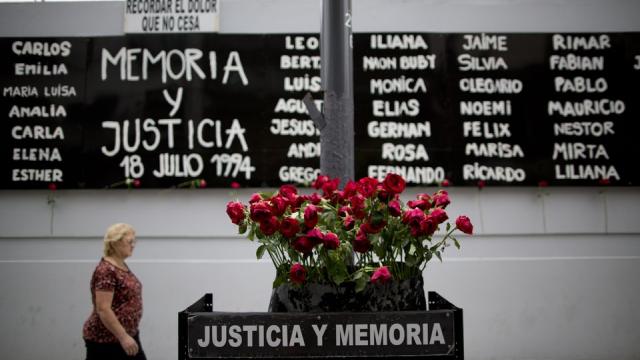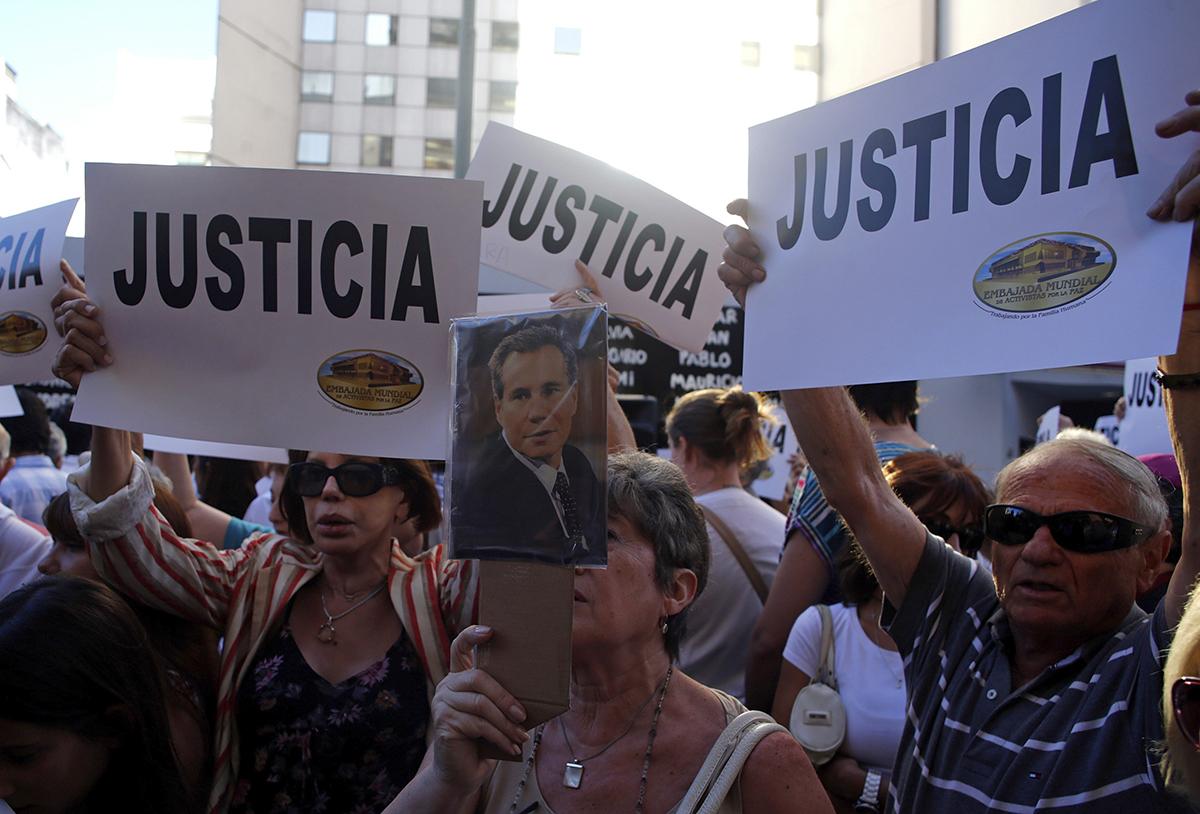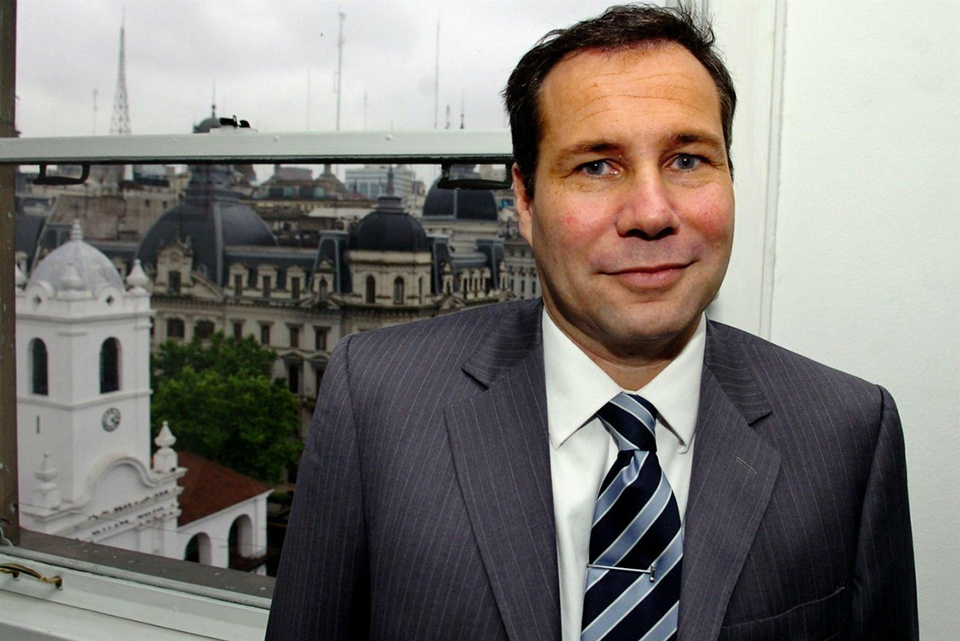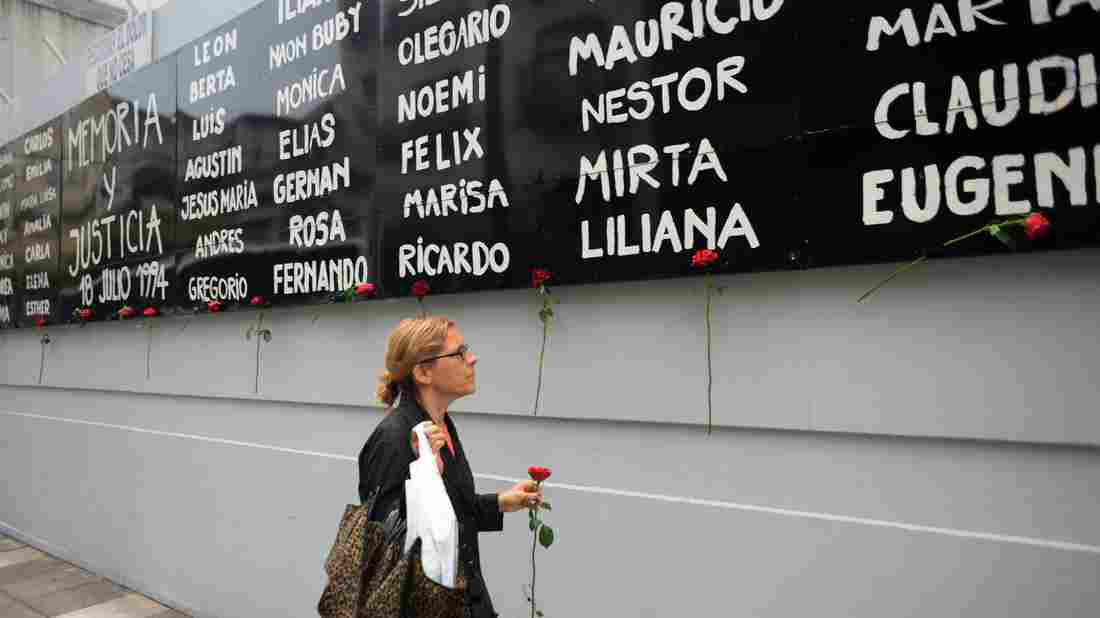
The lead investigator into the suspicious death of Argentine federal prosecutor Alberto Nisman announced this week that the deceased prosecutor had drafted warrants for the arrest of President Cristina Fernández de Kirchner and Foreign Minister Héctor Timerman before his death. Five days after accusing the president, foreign minister, and other politicians of covering up Iran’s involvement in the 1994 terrorist attack in Buenos Aires, Nisman was found dead of a gunshot wound in his apartment. President Kirchner claims Nisman was murdered by rogue operatives within Argentina’s intelligence agency, the Secretaria de Intelligencia (SI).
On July 18, 1994, a suicide bomber drove a van loaded with explosives into the Argentine Israelite Mutual Association building in Buenos Aires and killed 85 people. Five suspects, including four police officers, were originally charged with the bombing but were acquitted in 2004 due to lack of evidence. A year later, the federal judge in charge of the case, Judge Juan José Galeano, was impeached for serious irregularities and his mishandling of the investigation. On Oct. 25, 2006, Nisman formally accused the Iranian government of orchestrating the bombing and using Hezbollah to carry out the attack.
In 2008, Nisman requested the detention of former President Carlos Menem and Judge Galeano for their involvement in covering up evidence related to the bombing. On Jan. 14, Nisman filed a 289-page criminal complaint against President Kirchner, Foreign Minister Timerman, and several prominent politicians accusing them of covering up Iran’s involvement in the 1994 bombing. Five days later, Nisman was found dead of a gunshot wound. On the day his body was found, Nisman had been scheduled to appear before congress to brief legislators on his evidence against the president.
On January 19, Nisman was found in a pool of blood with a single bullet to the head. At the time of his death, Nisman was supposed to be under the protection of a 10-man security detail. Friends and relatives claim Nisman had exhibited no signs of depression and was eager to present his evidence before congress. Although a .22-caliber pistol was found near his body, Nisman did not leave behind a suicide note and his hands did not have any gunshot residue on them.
Viviana Fein, the lead investigator in the case, charged Nisman’s aide with providing a firearm to somebody not licensed to use it. Nisman’s aide, Diego Lagomarsino, asserts that Nisman had asked for the gun because former SI Director of Operations Antonio Stiusso had warned Nisman that his life was in danger.

President Kirchner fired Stiusso in December after she discovered the spymaster had been working with Nisman to build the case against her. Tensions between Stiusso and Kirchner built as members of a special operations unit of the Buenos Aires police shot one of Stiusso’s top counterintelligence agents to death in October. Obtaining intercepted calls and text messages from Kirchner’s close political allies, Stiusso worked with Nisman by providing evidence of the president covering up Iran’s involvement in the 1994 bombing in exchange for Iranian oil.
After firing Stiusso in December, the president assigned a trusted former chief of staff as SI’s new director. But after Nisman’s death, Kirchner announced plans last week to introduce a bill to congress that would dissolve SI and replace it with a new federal intelligence agency with reduced surveillance powers. Denying the allegations against her, Kirchner believes Stiusso provided misleading information to Nisman in order to steer his investigation. In a statement, Kirchner claimed that Nisman had been killed to humiliate her government and intensify the claims against her.
Less than a month after Nisman’s death, Fein still has not determined whether Nisman was murdered or committed suicide. While searching his apartment for clues, investigators found a 26-page draft requesting the arrests of President Kirchner and Foreign Minister Timerman in the garbage. The draft accused them of being authors of an aggravated cover-up and obstruction of justice regarding the Iranians involved in the 1994 terrorist attack.
Instead of filing the arrest warrant along with his 289-page criminal complaint, Nisman asked to freeze Kirchner’s assets and have her face questioning before a federal judge. Nisman is believed to have discarded the arrest warrant because Kirchner and Timerman have immunity as members of the executive branch. Kirchner can only be arrested after a lengthy impeachment process.
After initially denying the existence of the drafted arrest warrant, Fein backtracked on Tuesday admitting that the document does exist. While refuting claims that Kirchner’s administration is placing pressure on her office, Fein announced that she plans to take a vacation from Feb. 18 to March 5, even though she still has not ruled Nisman’s death a homicide or suicide.
Although Nisman spent nearly a decade investigating the 1994 bombing, two judges have refused to take the case put forward by Nisman’s criminal complaint. Judge Ariel Lijo recused himself from the case last week, and Judge Daniel Rafecas turned down hearing the case. A federal chamber is expected to decide who will take the case.
The 1994 terrorist attack followed the earlier bombing of the Israeli embassy in Buenos Aires on March 17, 1992. Twenty-nine people were killed and 242 wounded. No one has been convicted of either bombing.
3 WAYS TO SHOW YOUR SUPPORT
- Log in to post comments
















